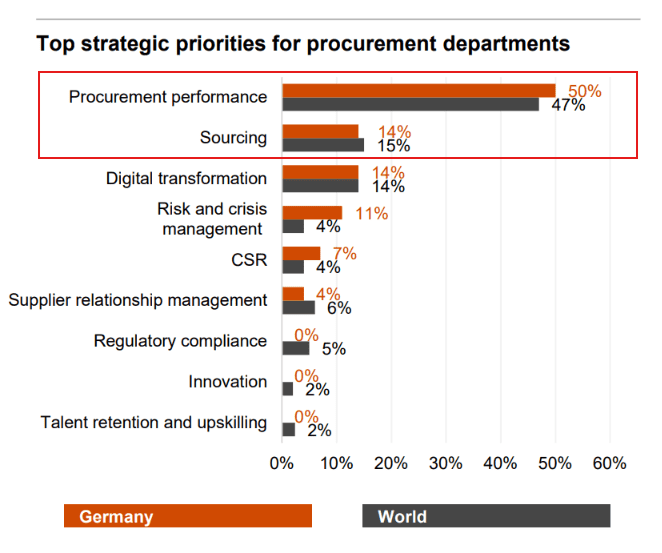Why Cost Management Is Crucial for German CIOs in 2025?
German CIOs are increasingly focusing on cost management as economic pressures mount.
Germany’s economy has stagnated over the past six months, with GDP for the second quarter revised down to -0.3%, despite a slight improvement in the third quarter. This stagnation signifies broader challenges, where Volkswagen faces significant struggles, including potential layoffs and factory closures.
The slowdown isn’t limited to Volkswagen. Mercedes plans to cut costs by billions of euros, Continental is laying off 7,150 workers globally, and Bosch aims to reduce its workforce by up to 5,550 jobs.
Cost pressures and labor disputes can severely affect SMEs, causing tighter pricing, shrinking profit margins, and greater competition for skilled workers. Supply chain disruptions from production cuts or factory closures can also lead to significant revenue losses for SMEs (small & medium sized) reliant on these larger companies.
Given these challenges, what key initiatives are C-level executives prioritizing to navigate the year ahead?
C-Level Recommendation: How to Ensure Cost-Efficiency?
According to PwC’s latest Digital Procurement Survey, which includes insights from SMEs across Germany and other regions, Procurement performance and Sourcing are critical areas for achieving cost efficiency.

Optimizing procurement ensures cost control and resilient supply chains, while streamlining sourcing through diversification and outsourcing cuts costs and boosts flexibility. How can businesses effectively balance procurement performance with sourcing challenges?
Strategies to Enhance Procurement Performance & Sourcing
The German economy is working to reduce risks by diversifying supply chains and becoming less dependent on China for sourcing, manufacturing, and sales. To achieve this, major manufacturers are relocating factories from Germany to Central and Eastern Europe (CEE) and Asia.
This trend is also becoming popular among small and medium-sized businesses, especially for projects requiring extensive coding or software development.
- Cost Savings: Outsourcing to CEE ($34–$74/hour) or Asia ($15–$25/hour) can cut costs by 50% compared to hiring locally in Germany.
- Access to Talent: These regions have many skilled IT professionals, helping solve Germany’s tech talent shortage while maintaining high-quality standards.
- Efficiency Gains: Partnering with experienced outsourcing firms improves processes. For example, a European fintech improved decision-making by 20% and optimized resources by 30% with a delivery center in Vietnam.
- Focus on Core Work: Outsourcing non-core tasks allows companies to concentrate on their main goals and growth, following the idea: “Do what you do best – outsource the rest.”
Key Takeaways
C-level executives in Germany are prioritizing smarter IT investments and streamlined procurement to optimize budgets and drive efficiency.
In our next newsletter, we’ll help you discover a blueprint for SMEs to achieve efficiency in 2025 and how German companies are building offshoring centers.
Contact us today to gain insights tailored to your business needs




